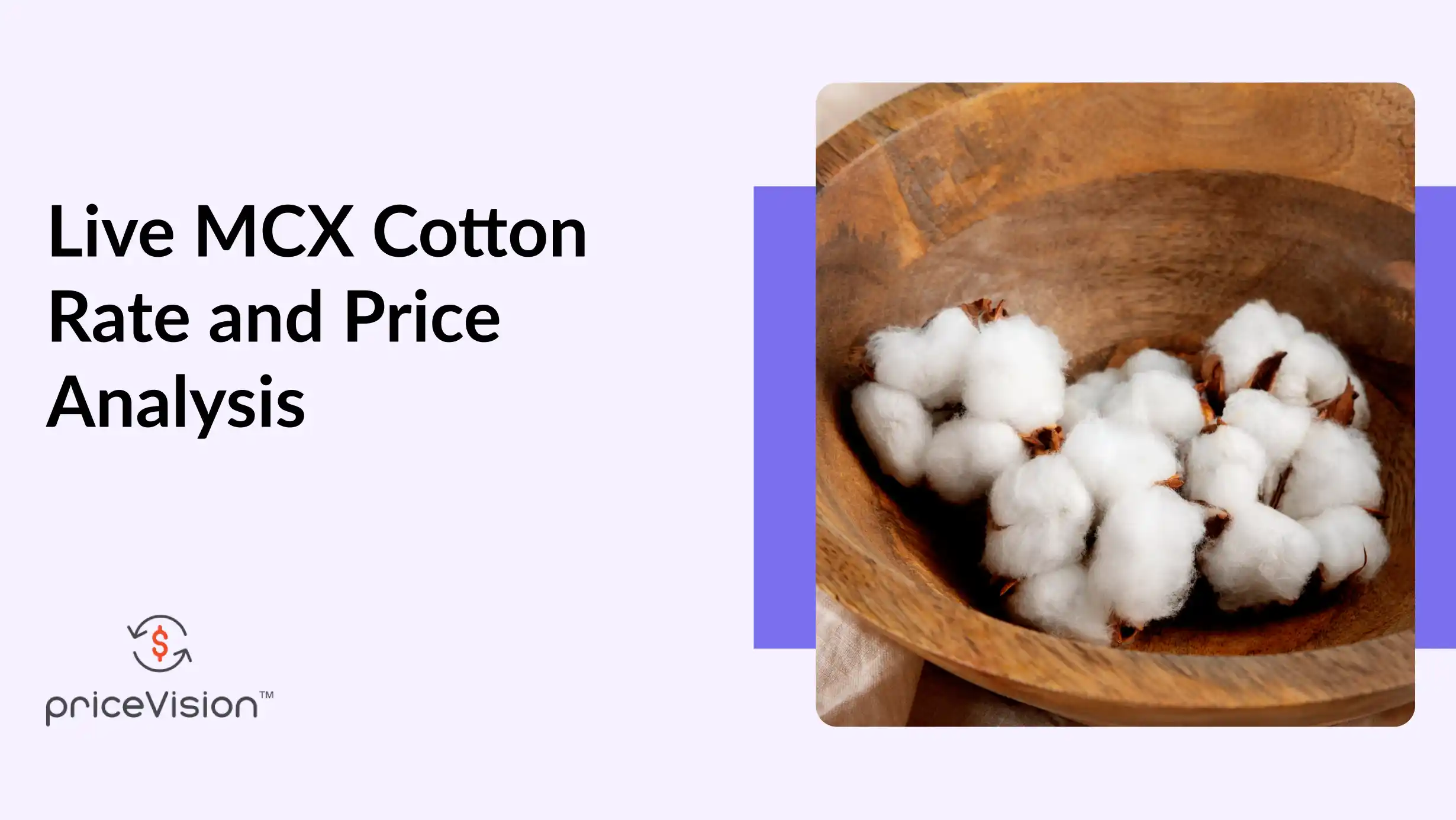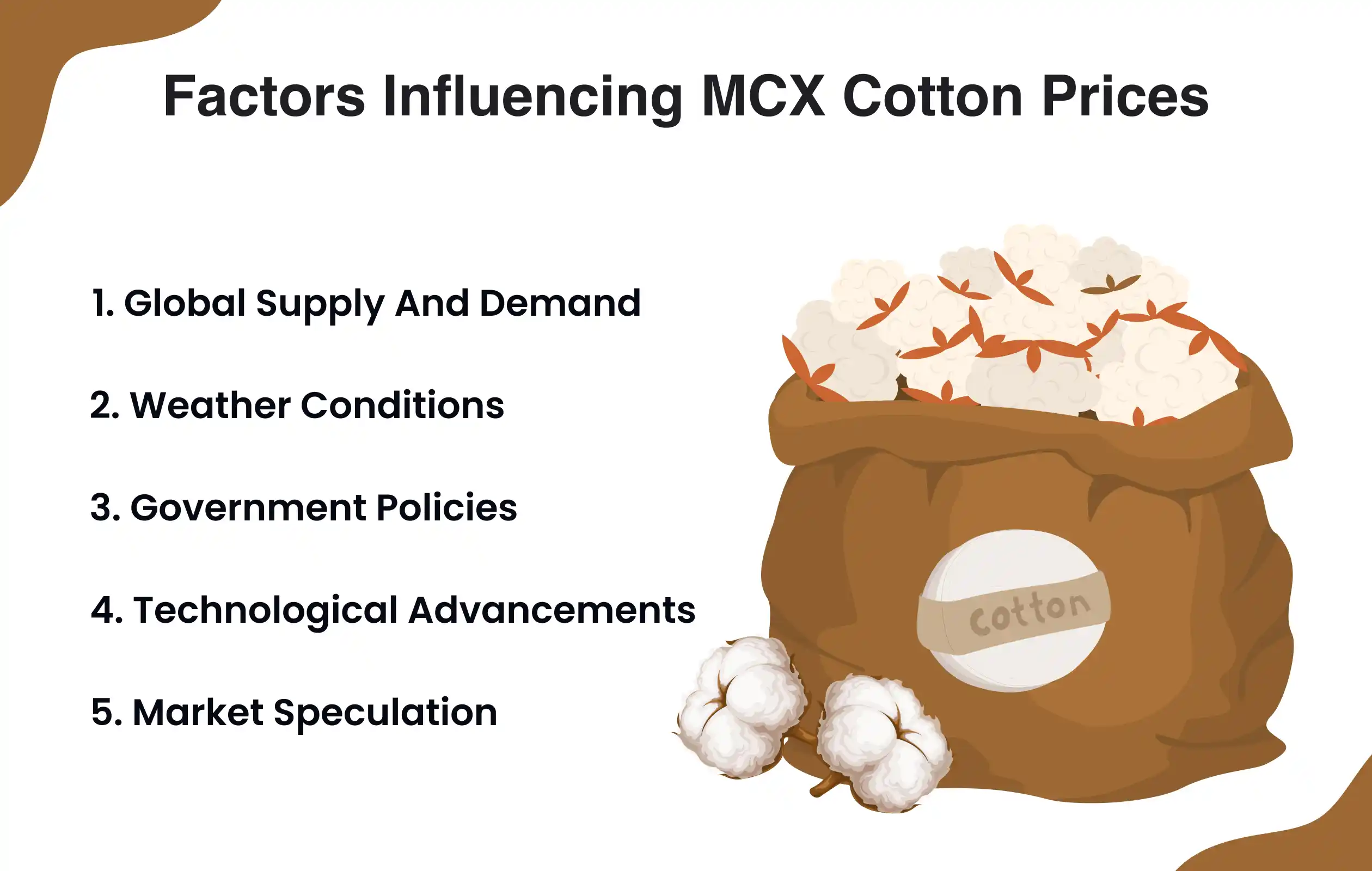Live MCX Cotton Rate and Price Analysis | PriceVision

The world of commodity markets has always been complex. Multiple materials are considered commodities in trading across the globe. One such commodity is cotton which holds utmost significance for the Indian market. The MCX cotton rates impact not only the economy but also the lives of millions.
The Multi Commodity Exchange of India (MCX) is an integral platform for trading cotton in the commodity market. The MCX cotton rates fluctuate due to several local and global factors. The MCX is responsible for regulating the performance of cotton in the market.
Diving deep into the MCX Cotton price is mandatory for handling the commodity market. There are several factors influencing the MCX cotton rate and commodity market. To determine the changing landscape of the commodity market, one has to keep an eye on the live MCX Cotton rate.
Understanding the MCX and Cotton Trading
MCX is one of the leading Indian cotton exchange platforms that monitors the functioning of cotton in the commodity market. The MCX handles the commodity trading of many materials such as gold, silver, and agricultural products.
The MCX cotton rates are crucial for many different industries. From stakeholders involved in the textile market to farmers, traders, and investors, MCX Cotton price are fundamental for many. Since the commodity market goes through various changes daily, keeping track of MCX Live Cotton rates is important.
The MCX cotton rates help the involved stakeholders in the cotton market to make better decisions. One can decide on how to buy, hold, or sell their cotton stocks. Investors can also determine their financial strategies according to the MCX cotton market.
Factors Influencing the MCX Cotton Rate
Multiple factors are accountable for the changing MCX cotton rates. Some of these include:

1. Global Supply and Demand
The international cotton prices depend heavily on the supply and demand dynamics. If there are constant demands from countries like the USA and China with low cotton production, the MCX Cotton price rise.
2. Weather Conditions
Cotton is an agricultural product, weather conditions influence its production. The cotton crop needs optimal temperature and natural rains. Adverse weather conditions such as excessive rain or drought impact crop yields.
Due to poor crop production, there are high fluctuations in the MCX cotton rates.
3. Government Policies
Major cotton-producing countries such as India can set trade policies, subsidies, and export quotas. These policies are formed mainly to protect the best interests of sellers in a country. However sudden changes in these policies can alter the MCX cotton rates significantly.
The Indian government sets the minimum support price (MSP) and export restrictions for the benefit of its citizens. These regulations also bring changes to how MCX cotton performs in the commodity market.
4. Technological Advancements
Higher cotton production is being made with the support of new agricultural methods. The latest technologies have been forming new agriculture methods with better crop yields. Genetic modifications in the cotton crops are making the supply and demand meet.
As more crops are yielded to meet consumer demands, the prices of MCX cotton rates go down.
5. Market Speculation
The MCX cotton rates are also subjected to market speculations. The perception of traders and consumer behavior or changes in mindsets can bring fluctuations to the MCX Cotton price. Future price predictions are made through the help of different economic indicators. All such factors tend to fluctuate the MCX cotton rates.
Current Trends in the MCX Cotton Rates
Get real-time prices here: Live cotton price
MCX cotton rates have always been volatile. The commodity market has been trying to recover since the pandemic. The cotton crops are affected due to the constant erratic conditions in the key producing areas. Moreover, the daily market speculations and changing trends bring fluctuations in the MCX Cotton price.
However, there has been a recent pick in the market as there is increased demand for cotton from the textile industries. Adverse weather conditions in India and the USA have been impacting the cotton supply. These factors have been bringing constant MCX cotton price fluctuations.
Analyzing the Price Trends
There are historical price trends of MCX cotton that can be analyzed to understand cotton movements.
|
Year
|
Price
(USD) |
|
2020 |
17,855 |
|
2021 |
25,517 |
|
2022 |
39,330 |
|
2023 |
57,374 |
|
2024* |
58,064 |
(average prices from Cotton 29mm Futures Historical Prices - Investing.com India)
● Short-Term Trends: Due to the delayed monsoon season, cotton saw bullish trends. The MCX also saw an upward trend of cotton demands due to high exports.
● Long-Term Trends: Over the last few years, MCX cotton has observed cyclical trends with several highs and lows. Due to technological advances in cotton farming, the MCX cotton prices stay under check. An increased efficiency of cotton farming has led to the growth of cotton trading in the commodity market.
The traders invested with MCX cotton rates should use detailed price analysis for buying and selling decisions. Traders need to keep a keen eye on MCX cotton rates. One can do so by examining past price movements and current market trends.
Methods such as technical analysis and studying price charts can help traders gauge market sentiments.
Price Analysis with PriceVision
Price analysis is a crucial aspect for traders working with the commodity market. PriceVision is a tool that can predict future prices of MCX cotton. The tool works with the power of artificial intelligence, machine learning, and predictive analysis. Traders can also make real-time decisions with the live price analysis.
Get real-time prices here: https://pricevision.ai/categories/agri
Conclusion
Monitoring the live MCX cotton rates is important for all the stakeholders in the global cotton market. Cotton being an agricultural product is prone to multiple fluctuations in the market. Opting for help with smart tools like PriceVision helps investors with decision-making. Global changes in the MCX cotton rates can be navigated timely with the market analysis of tools.